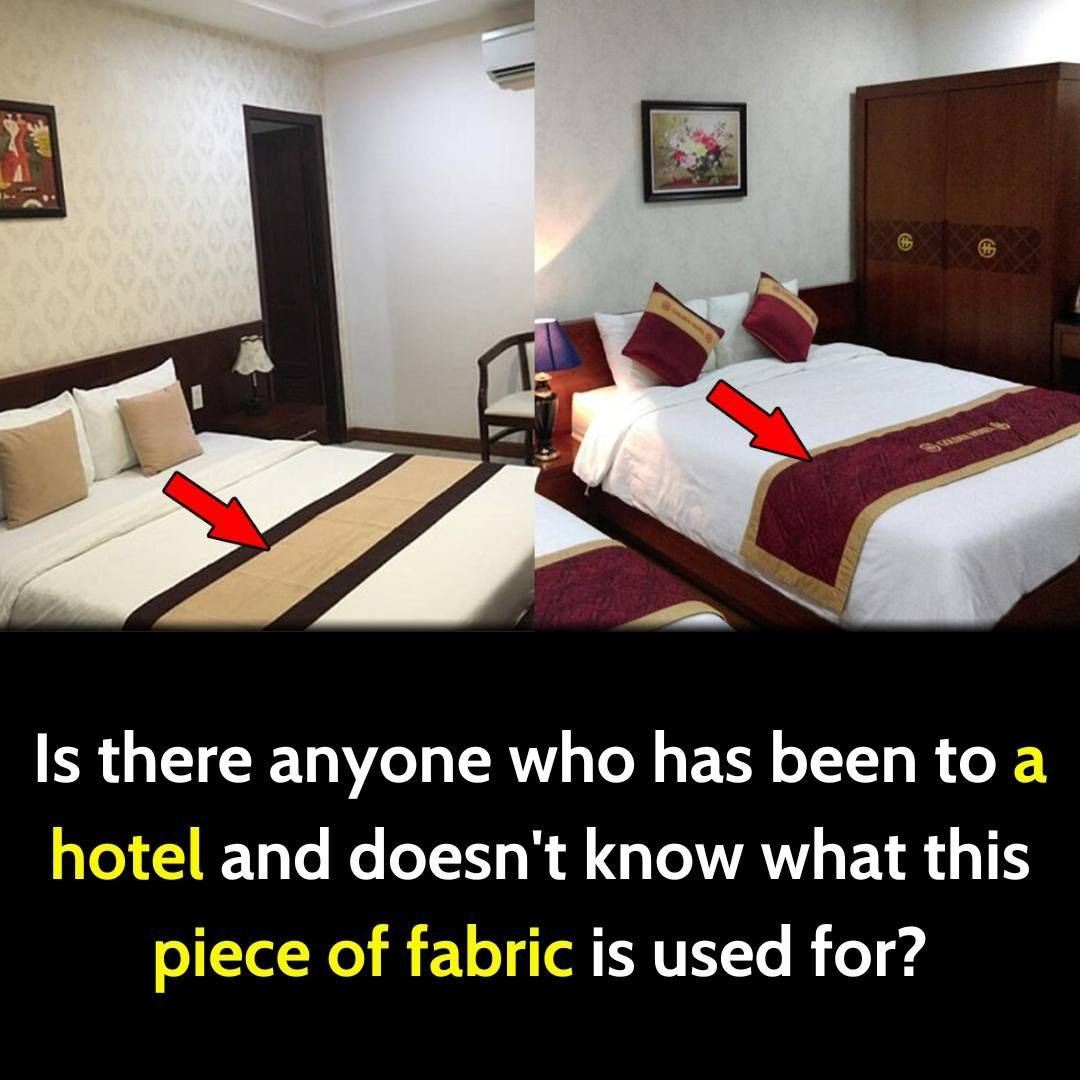When checking into a hotel room, one of the first things guests often notice is the decorative fabric strip laid across the foot of the bed. Known as a bed runner, this seemingly simple detail might appear to serve purely aesthetic purposes, adding a splash of color or sophistication to an otherwise neutral bedding arrangement. However, this unassuming piece of fabric has a far more functional role than most people realize. While many guests casually toss it aside without a second thought, the bed runner serves multiple practical purposes that contribute to both guest comfort and the hotel’s operational efficiency.

At first glance, hotel beds are meticulously made, with crisp white linens, plush pillows, and neatly arranged blankets creating an inviting scene. The bed runner, typically made from durable, high-quality fabric, is about half a meter wide and usually positioned at the foot of the bed. Its darker tones and sturdy material distinguish it from the softer sheets and blankets underneath, hinting at its utility beyond decoration. Whether you’re lounging with snacks, placing your belongings temporarily, or simply resting after a long day, this strip of fabric has more value than meets the eye.
A Barrier for Snacks and Drinks
One of the most overlooked but practical purposes of the bed runner is its role as a protective barrier for food and beverages. Hotel stays often come with indulgent moments—whether it’s enjoying a late-night snack while binge-watching TV or sipping a cup of coffee in the morning. However, these moments can quickly turn messy if crumbs or accidental spills find their way onto the pristine white sheets. The bed runner provides a designated space for snacks and drinks, shielding the main linens from potential stains. If a spill does occur, the bed runner is far easier and cheaper to clean or replace than the hotel’s primary bedding.
A Spot for Personal Belongings
Travelers often carry an assortment of personal belongings, such as backpacks, jackets, purses, or electronics, all of which need a temporary resting place. However, placing these items directly on clean white sheets can transfer dirt, germs, or debris, compromising the hygiene of the sleeping area. The bed runner acts as a buffer, offering a clean and designated space to temporarily store such items without contaminating the sheets. It’s a small but thoughtful touch that can make a significant difference in maintaining cleanliness and peace of mind during a hotel stay.
A Place to Rest Your Feet
After a long day of exploring a city, attending meetings, or navigating airports, many guests find themselves flopping onto their beds, shoes still on or feet far from freshly washed. Placing dirty shoes or feet on the pristine white bedding isn’t just inconsiderate—it also creates extra cleaning work for housekeeping staff. The bed runner serves as a protective layer, strategically placed at the foot of the bed to catch any dirt, dust, or debris from shoes or feet. This simple yet effective design choice helps maintain the integrity of the bed linens while allowing guests to relax without worry.
A Subtle Aid for Intimate Moments
While it’s a topic rarely discussed, the bed runner serves another practical purpose for couples. Intimate moments during hotel stays can sometimes lead to concerns about staining or damaging the bed’s white sheets. The durable and easy-to-clean material of the bed runner offers a discreet yet functional solution, minimizing stress and allowing guests to enjoy their experience without lingering worries about potential messes. It’s yet another example of how this seemingly decorative strip of fabric has been thoughtfully designed to address various guest needs.
Enhancing the Room’s Aesthetic Appeal
Of course, while functionality is key, the visual appeal of a bed runner cannot be overlooked. Hotels invest heavily in creating inviting and luxurious environments, and the bed runner adds a touch of sophistication and elegance to the room’s overall design. Its color and pattern are often coordinated with the hotel’s theme, complementing curtains, upholstery, and other decorative elements. This small detail contributes to the cohesive visual harmony of the room, leaving guests with a positive and lasting impression.
Simplifying Housekeeping Efforts
Beyond guest comfort, the bed runner also plays a significant role for housekeeping staff. Linens are among the most labor-intensive and expensive items to clean and replace in a hotel. By acting as a first line of defense against stains, spills, and dirt, the bed runner helps reduce wear and tear on primary bedding. In many cases, staff can simply swap out or spot-clean the bed runner instead of changing the entire set of sheets and blankets. This not only saves time but also reduces operational costs, allowing hotels to maintain their standards of cleanliness and efficiency.
A Symbol of Attention to Detail
In many ways, the bed runner represents a hotel’s commitment to thoughtful design and attention to detail. It’s a small addition that serves multiple purposes—protecting linens, providing convenience for guests, and enhancing the overall look of the room. Hotels that invest in such seemingly minor details demonstrate a level of care and foresight that sets them apart from their competitors. These thoughtful touches contribute to the overall guest experience, ensuring that every stay feels intentional and well-planned.
A Versatile and Practical Addition to Your Stay
The next time you step into a hotel room and see a bed runner neatly draped across the bed, take a moment to appreciate its purpose. It’s not just a colorful decoration—it’s a multi-functional tool designed to enhance your stay. Whether you’re using it as a snack tray, a resting spot for your belongings, or simply enjoying its aesthetic appeal, the bed runner adds value in ways many guests might not realize.
In conclusion, while the bed runner might seem like a minor detail, it plays an important role in the overall hotel experience. It protects the bedding, simplifies cleaning, enhances aesthetics, and caters to a variety of guest needs. The next time you’re tempted to toss it aside, remember its many purposes and give a silent nod to this unsung hero of hotel design. It’s proof that even the smallest details can have the greatest impact on comfort, convenience, and a truly memorable stay.





